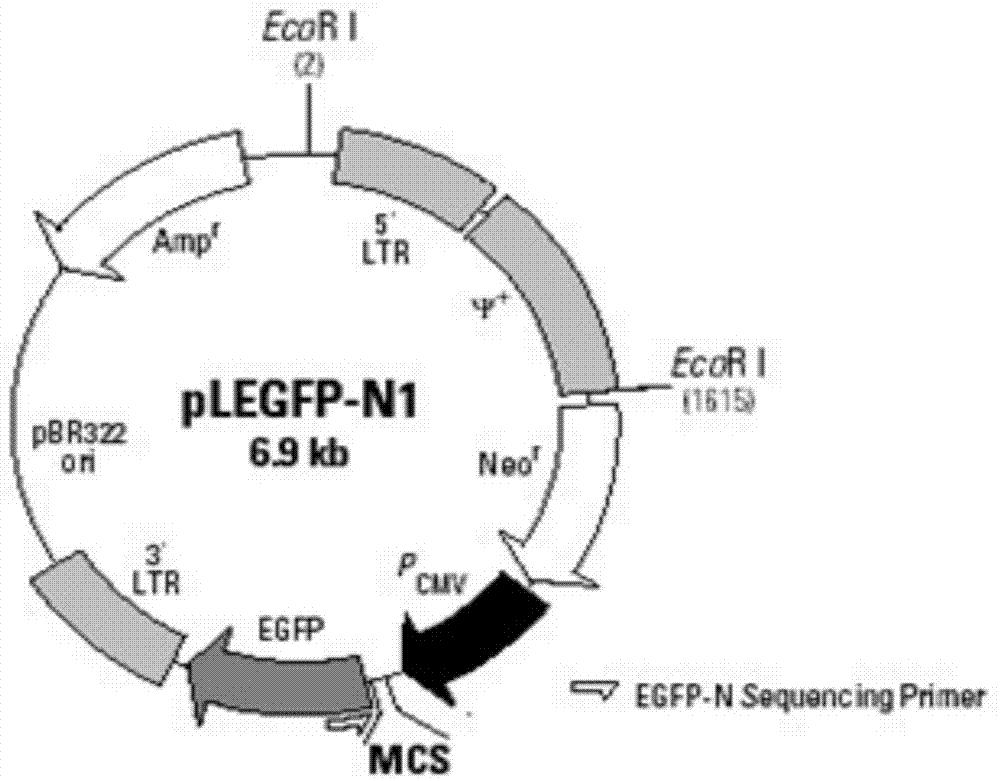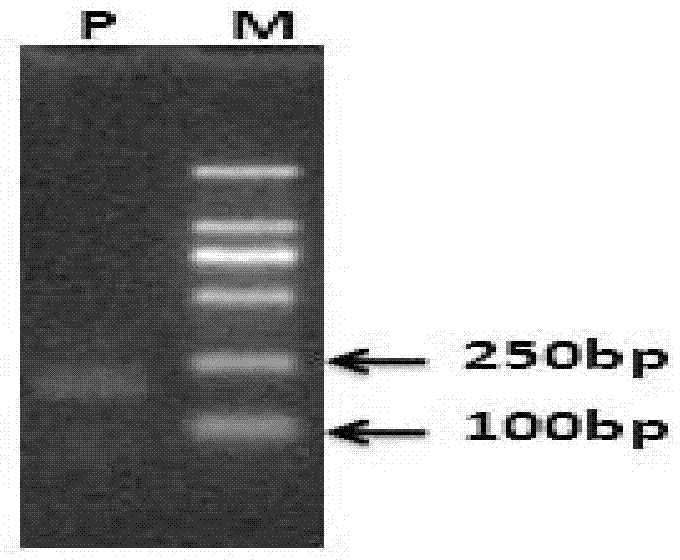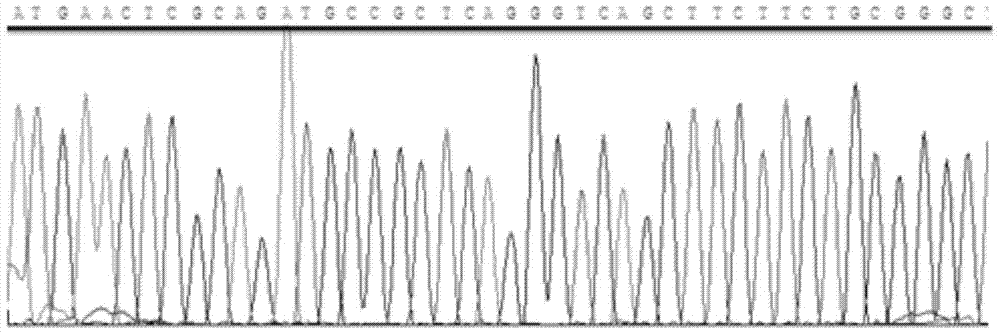Method for cloning unique micro-molecule polypeptide ES61 encoding gene of embryonic stem cell
A technology of small molecule polypeptides and embryonic stem cells, which is applied in the field of genetic engineering, can solve the problem of difficult to complete quantitative detection of ES61 polypeptide genes, and achieve the effect of convenient quantitative detection.
- Summary
- Abstract
- Description
- Claims
- Application Information
AI Technical Summary
Problems solved by technology
Method used
Image
Examples
Embodiment Construction
[0022] The present invention is further described below in conjunction with specific examples. It should be understood that these examples are only used to illustrate the present invention and are not intended to limit the scope of application of the present invention.
[0023] 1 Total RNA extracted from human villi tissue and transcribed into cDNA
[0024] 1.1 Extraction of RNA
[0025] (1) Pre-treatment of the sample: Take about 30mg of tissue and grind it with liquid nitrogen, put it into a 1.5ml EP tube, add 0.5ml BioPure, and mix for 5-10 minutes to fully lyse the tissue. Cell samples do not need to be milled, and can be directly carried out in the next step.
[0026] (2) Phase separation: add 100 μl of chloroform (1 / 5 of the total volume of BioPure), fully invert and mix well, let stand at room temperature for 5 minutes, centrifuge at 12000 rpm at 4°C for 15 minutes, separate the solution, and carefully pipette the upper part containing RNA. Transfer to a new centrifu...
PUM
 Login to View More
Login to View More Abstract
Description
Claims
Application Information
 Login to View More
Login to View More - R&D
- Intellectual Property
- Life Sciences
- Materials
- Tech Scout
- Unparalleled Data Quality
- Higher Quality Content
- 60% Fewer Hallucinations
Browse by: Latest US Patents, China's latest patents, Technical Efficacy Thesaurus, Application Domain, Technology Topic, Popular Technical Reports.
© 2025 PatSnap. All rights reserved.Legal|Privacy policy|Modern Slavery Act Transparency Statement|Sitemap|About US| Contact US: help@patsnap.com



